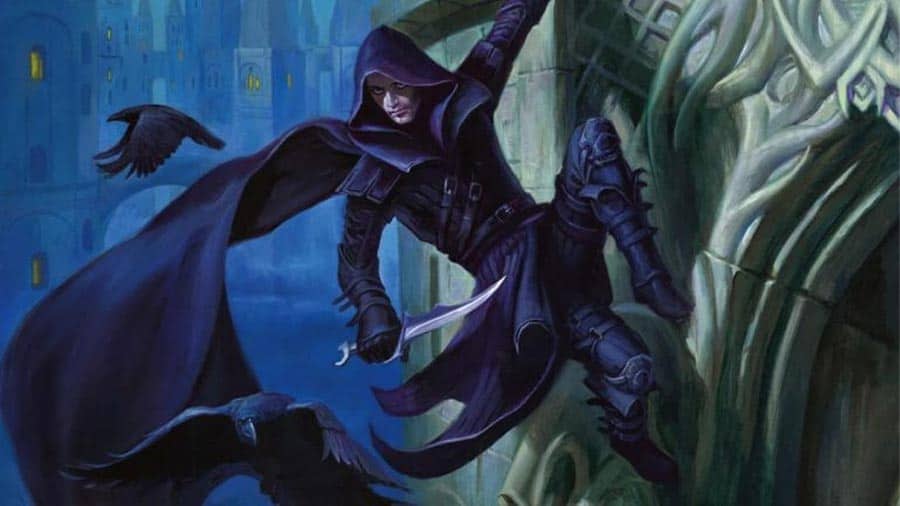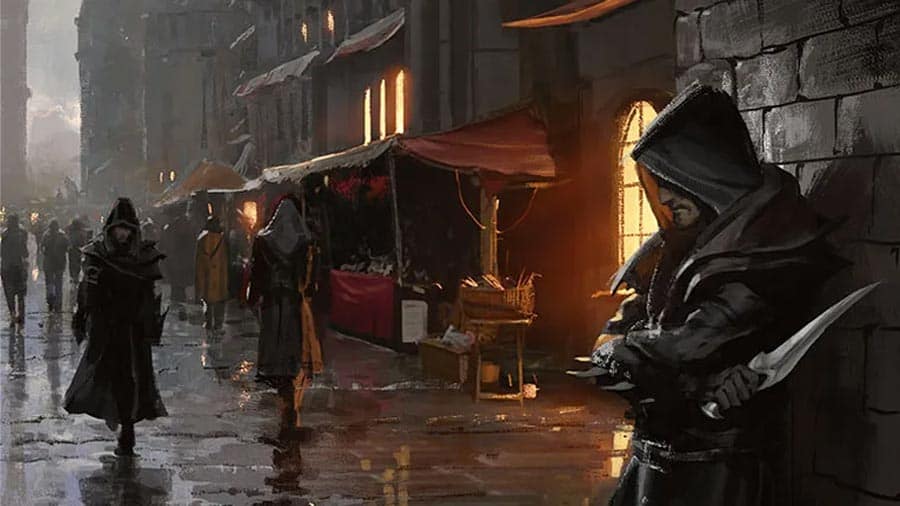Human Rogue 5e | The Complete Guide

Rogue is an interesting subclass of the Human race and usually are versatile in its skill sets. Human rogue is one of the most interesting characters of D&D 5e ( check character guide), if you want to explore characters like human rogue. If you want to compare, many famous characters in media would be classified as Human Rogues if they could be organized.
For example, Batman, Robin Hood, Carmen Sandiego, Catwoman, and Black Widow are among those characters. You can always change their races to fit other D&D races if you want to go the extra mile.
Let’s learn more about Rogues and how you can use them in the best way possible.
What is Rogue 5e?
Rogues are the archetypal Face, Scout, and Striker. Sneak Attack allows them to deal massive damage in a single attack, and their arsenal of skills allows them to quickly deal with locks, traps, guards, and a variety of other obstacles.
Rogues are typically divided into melee and ranged builds, though the universal efficacy of Dexterity allows many rogues to switch between the two easily.
Melee Rogues frequently choose two-weapon combat because it gives them a second chance to score Sneak Attack. The hit-and-run tactics enabled by Cunning Action are an excellent way to get into melee and Attack before retreating behind your party.
Ranged rogues typically rely on sniping, which is also enabled by Cunning Action due to the Bonus Action of hiding. Hiding after each Attack with Cunning Action is dependable and effective, albeit static and repetitive. Rogue subclasses expand on those tactical options, but in many cases, the class’s core tactics remain critical to its function.
Skills of Rogue 5e
Rogues put as much effort into mastering a wide range of skills as they do in perfecting their combat abilities, giving them a breadth of knowledge that few other characters can match. Many rogues concentrate on stealth and deception, while others hone dungeon-specific skills such as climbing, finding and disarming traps, and opening locks.
Rogues prefer cunning over brute strength when it comes to combat. A rogue would rather make a single precise strike, landing exactly where the target will be most hurt, than wear an opponent down with a barrage of attacks. Rogues have an almost supernatural ability to avoid danger; some learn magic tricks to supplement their other skills.
How to Build a Human Rogue?

The first step in creating a Human Rogue is deciding which subclass to take. Your preferred subclass will influence how you arrange your ability scores. The following are the Roguish Archetypes or subclasses:
- Assassin
- Thief
- Arcane
- Trickster
- Inquisitive
- Mastermind
- Phantom
- Scout
- Soulknife
- Swashbuckler
Make Dexterity your highest ability score if you choose the Thief or Assassin subclass. Then, depending on the skills, you want to master, add Intelligence or Charisma. Make Intelligence your highest ability score if you want to cast spells as an Arcane Trickster.
Consider the character’s relationship to the law as you create your Rogue. Do you have a criminal history, either past or present?
Are you fleeing the law or an angry thief’s guild master? Or did you abandon your guild in search of greater risks and greater rewards? Is it greed or some other desire or ideal that drives your adventures?
What triggered your departure from your previous life? Did a great con or heist that went horribly wrong cause you to reconsider your career? Perhaps you were fortunate, and a successful robbery provided you with the funds you required to escape the squalor of your life.
You can create your backstory for the character however you want. For more details about to create a backstory for your character, refer to our D&D background guide.
How to Play as Human Rogue?

In 5e, the Rogue is one of the best martial classes. The Sneak Attack ability is the Rogue’s one-of-a-kind and most potent class feature. The human rogue sneak attack ability allows you to deal more damage to enemies who are distracted by your allies or otherwise occupied.
Evasion and Uncanny Dodge are also important and useful combat skills. These skills make you a difficult target and increase your chances of surviving heavy blows.
Don’t forget to use the abilities that are unique to each subclass. Unsurprisingly, the most lethal and dangerous foe is a Human Rogue Assassin. Thieves excel at planning ambushes and escaping fights.
Spells like Fog Cloud, Web, Minor Illusion, and Tasha’s Hideous Laughter are good for Arcane Tricksters.
D&D Human Rogue Weapons
Here are the best weapons for Human Rogue:
- Crossbow, Hand: A decent ranged weapon, but it doesn’t do anything that a light crossbow can’t.
- Light Crossbow: The go-to ranged weapon. With the same range as a short bow but higher damage die. Because rogues do not have an Extra Attack, the reload property is meaningless.
- Dagger: Excellent for two-weapon combat, and you can throw them if necessary, but the Short Sword has a slightly higher damage die.
- Longsword: I’m not sure why Rogues learn to use long swords.
- Rapier: The best choice for single-weapon melee.
- Shortsword: Excellent for two-weapon combat. They are similar to daggers, but they cannot be thrown.
- Short bow: A light crossbow is unquestionably superior.
How to Roleplay as a Human Rogue?
To enjoy a Human Rogue character, you don’t have to be dark, brooding, or edgy. Find inspiration from the well-known characters mentioned in the introduction. You can also use your imagination to create a Human Rogue that no one has ever seen before.
Here’s a quick example of a Human Rogue backstory you could use:
In Mordor, charlatans like Sauron are common. Few, however, are as skilled as he is at capturing the hearts and fortunes of wealthy women.
This earned him notoriety in the cities he visited. Many of his victims dispatch assassins and goons to retrieve their jewels or to teach him a lesson. Because of the dangers, Sauron has decided to put his skills to good use.
Conclusion
Human rogues must not be shadowy, edgy characters to enjoy them. Rogues usually come with an archetype of a brooding, dark person, but you can spice it up by making it more cheerful and less mysterious.
Human Rogues can be really interesting and powerful based on how you set up the character and use it. Suppose you want to switch from human rogue to other race rogue character, you can consider tabaxi rogue as one of your option. I hope this article has shown you how to use Human Rogue in D&D 5e effectively.






